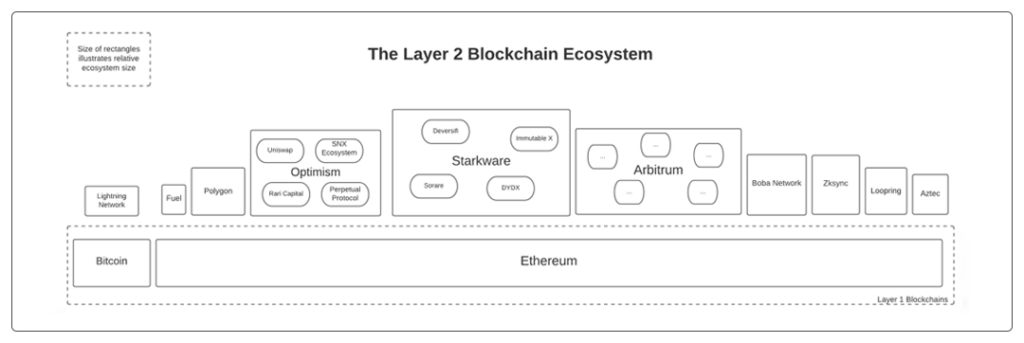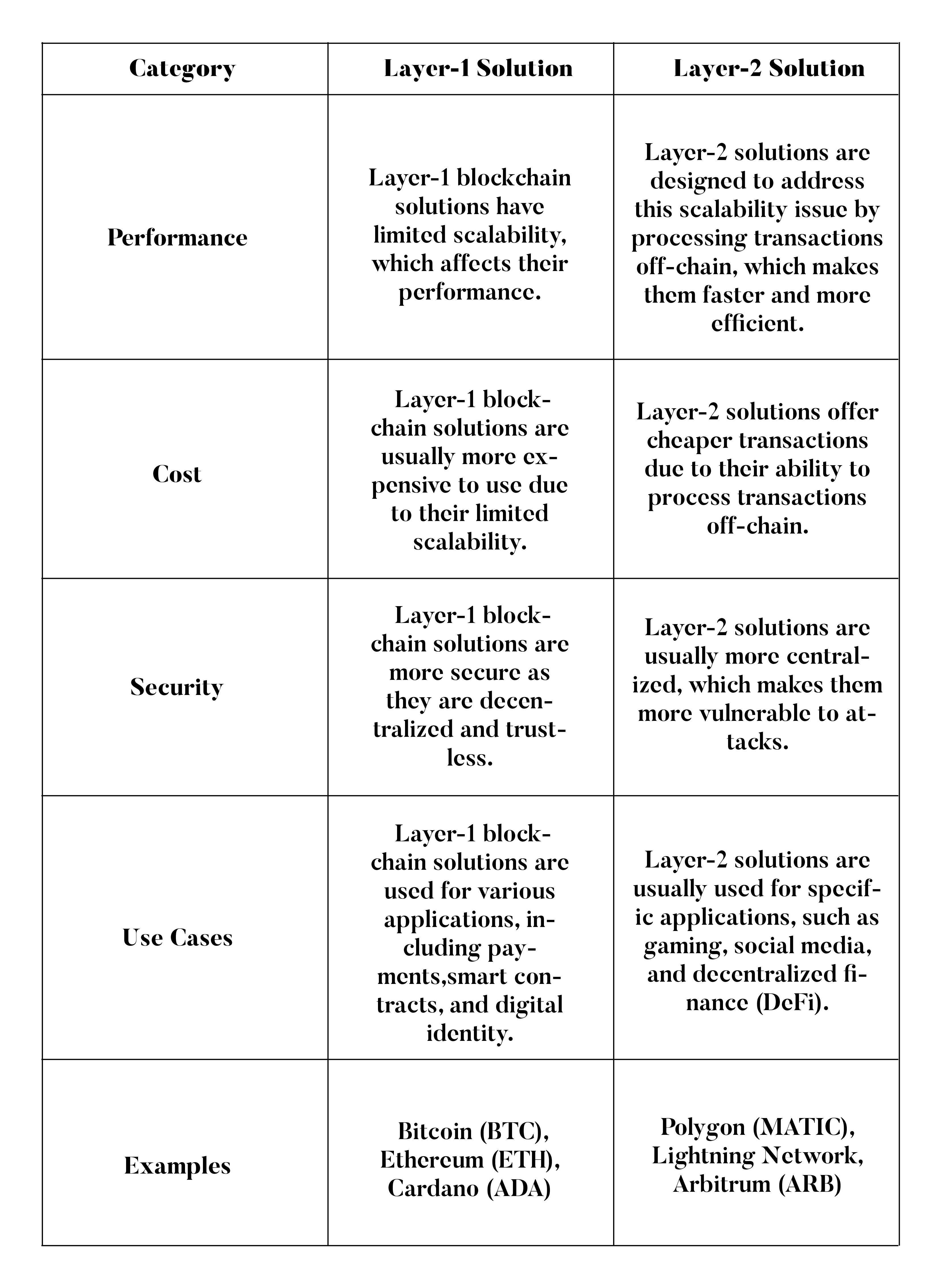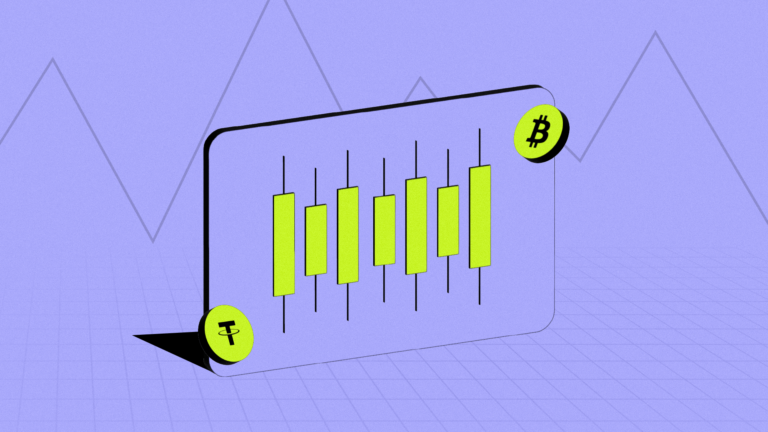Blockchain technology has been gaining popularity over the past decade for its potential to revolutionize various industries. However, one major challenge that blockchain faces is scalability. As more users join the network, the blockchain becomes slower, less efficient, and more expensive to use.
This issue has become more pronounced as blockchain technology gains wider adoption, particularly in areas such as decentralized finance (DeFi), gaming, and social media. To address the scalability issue, developers have been working on Layer-1 and Layer-2 solutions that offer different approaches to scaling the blockchain.
In this blog, we’ll discuss what blockchain scalability is and how these layer-1 and layer-2 solutions are solving these scalability concerns. In addition, we’ll also look at their potential impact on the future of blockchain technology.
Layer-1 and Layer-2 Solutions: What is Blockchain Scalability?
Blockchain scalability refers to the ability of a blockchain network to handle a growing number of users and transactions without compromising its performance. In other words, it’s the ability of the network to increase its capacity to accommodate more users and transactions.
One of the primary benefits of blockchain technology is its decentralized and trustless nature. This eliminates the need for intermediaries and central authorities. However, this also poses a significant challenge when it comes to scalability. As more users join the network, the time required for the nodes to verify transactions increases. This makes the network slower and less efficient.
Moreover, the limited number of transactions that can be processed per second makes layer-1 blockchain solutions more expensive to use. For example, Bitcoin can handle only 7 transactions per second, while Ethereum can process around 15 transactions per second. This makes it difficult to scale the blockchain network to accommodate more users and transactions.
To address this issue, developers are working on layer-2 solutions that operate on top of the layer-1 blockchain. These solutions aim to increase the throughput of the network. By processing transactions off-chain and submitting the final result to the layer-1 blockchain. By doing so, layer-2 solutions can provide faster and cheaper transactions while maintaining the security and decentralization of the layer-1 blockchain.
In short, scalability is a crucial issue in the blockchain world as it directly affects the speed, efficiency, and cost of transactions. While layer-1 solutions provide the foundation for the blockchain network, layer-2 solutions offer a promising approach to improving the scalability and efficiency of the blockchain.
What is Layer-1 Blockchain Solution?
Layer-1 is the foundation of a blockchain network, where the core protocols and consensus mechanisms are implemented. It is responsible for maintaining the integrity and security of the blockchain network.

Layer-1 solutions offer several benefits, including transparency, immutability, and security. By having a copy of the blockchain ledger, every node can validate the transaction, ensuring that it meets the network’s requirements. Additionally, since the blockchain is immutable, once a transaction is confirmed and added to the blockchain, it cannot be changed, making the network highly secure.
However, there are also downsides to Layer-1 solutions. One significant issue is scalability. As more users join the network, the time required for nodes to validate transactions increases, making the network slower and less efficient. Moreover, the limited number of transactions that can be processed per second makes Layer-1 blockchain solutions more expensive to use.
How Layer-1 Solutions Works?
In a layer-1 blockchain, every node in the network has a copy of the blockchain ledger. When a new transaction occurs, it is broadcasted to the network and verified by the nodes. The verification process involves solving complex mathematical algorithms known as cryptographic puzzles to validate the transaction. Once the transaction is confirmed, it is added to the blockchain ledger, and the nodes update their copies of the blockchain.
Layer-1 blockchains are designed to be decentralized and trustless, meaning they don’t require a central authority to validate transactions. Instead, the nodes in the network work together to maintain the blockchain ledger. This makes the network resistant to censorship and fraud, as every transaction on the network is verified and validated by the nodes.
The security and immutability of layer-1 blockchains come at the cost of scalability. As more users join the network, the time required for the nodes to verify transactions increases, making the network slower and less efficient. Moreover, the limited number of transactions that can be processed per second makes Layer-1 blockchain solutions more expensive to use.
To address these scalability issues, developers are working on layer-2 solutions, which operate on top of layer-1 blockchains. Layer-2 solutions use various mechanisms to process transactions off-chain, such as state channels, sidechains, and rollups, to improve the scalability of the blockchain network.
What is Layer-2 Blockchain Solution?
Layer-2 solutions are essential protocols or technologies built on top of existing layer-1 blockchains, such as Ethereum or Bitcoin. The goal of layer-2 solutions is to increase the capacity of the network to process transactions, thereby improving scalability while maintaining the security and decentralization of the underlying layer-1 blockchain.

Apart from that, there are several different types of layer-2 solutions, including state channels, sidechains, and rollups. Each of these solutions takes a different approach to solving the scalability problem.
However, layer-2 solutions also come with some trade-offs. One of the main trade-offs is that layer-2 solutions are less secure than layer-1 solutions. In addition, layer-2 solutions can also be more complex to implement and require more significant development effort as compared to layer-1 solutions.
Despite these trade-offs, layer-2 solutions are becoming increasingly popular in the blockchain world. As a result, developers are actively working on new layer-2 solutions that can improve the scalability and efficiency of blockchain networks.
How Layer-2 Solutions Works?
Layer-2 blockchain solutions are designed to improve the scalability and efficiency of layer-1 blockchains. There are several mechanisms that layer-2 solutions use to process transactions off-chain, which can significantly increase the throughput of the network.
One of the most popular layer-2 solutions is state channels. State channels allow two parties to transact off-chain by opening a channel between them. Once the channel is open, the parties can send and receive transactions within the channel without involving the layer-1 blockchain. These are mostly useful for microtransactions or frequent interactions between two parties.
Another layer-2 solution is sidechains. These are separate blockchains that run in parallel to the layer-1 blockchain. They allow for faster and more efficient transactions by processing them off-chain and only submitting the final result to the layer-1 blockchain. Sidechains can be customized for specific use cases, such as payments, gaming, or supply chain management.
Rollups are another popular layer-2 solution that bundles many transactions into a single transaction and submits them to the layer-1 blockchain. There are two types of rollups: optimistic and zk-rollups. Optimistic rollups assume that all the transactions are valid, and only verify them if there is a dispute. Zk-rollups use zero-knowledge proofs to verify the transactions off-chain, ensuring their validity before submitting them to the layer-1 blockchain.
Furthermore, layer-2 solutions can also be combined to achieve even higher scalability and efficiency. For example, state channels can be used within sidechains to enable fast and secure transactions. Rollups can be used within state channels to bundle transactions and reduce the cost of interactions.
This indicates that layer-2 solutions offer a range of mechanisms to improve the scalability and efficiency of blockchain networks. They provide faster and cheaper transactions while maintaining the security and decentralization of the layer-1 blockchain.
Difference Between Layer-1 and Layer-2 Blockchain Solutions
Layer-1 and Layer-2 solutions are two of the most important aspects of solving scalability concerns in the blockchain realm. However, there are several differences between them:

This indicates that Layer-1 and Layer-2 blockchain solutions offer different approaches to addressing the scalability issue of blockchain technology.
While layer-1 solutions provide the foundation for the blockchain network, layer-2 solutions offer faster and cheaper transactions by processing them off-chain. The choice between layer-1 and layer-2 solutions depends on the specific use case and requirements of the application.
Future of Layer-1 and Layer-2 Solutions
As the blockchain industry continues to grow, there will be a need for both layer-1 and layer-2 solutions. While layer-1 solutions are critical for maintaining the security and decentralization of the blockchain network, layer-2 solutions will play an essential role in improving the scalability and efficiency of the network.
Moreover, layer-2 solutions are likely to play a critical role in the adoption of blockchain technology in various industries. For instance, in the gaming industry, layer-2 solutions could enable faster and cheaper transactions for in-game items and rewards. In DeFi, layer-2 solutions could provide a more scalable and cost-effective alternative to existing platforms.
Overall, the future of blockchain technology looks promising, and layer-1 and layer-2 solutions will play a critical role in driving its adoption and success. With continued innovation and development, we can expect to see even more advanced solutions that will make blockchain technology more accessible, efficient, and secure.
Conclusion
Both Layer-1 and Layer-2 blockchain solutions play a critical role in the growth and adoption of blockchain technology. While layer-1 provides the security and decentralization that blockchain is known for, layer-2 offers a practical solution to the scalability issue.
As the blockchain industry continues to mature, we can expect to see further development and adoption of layer-2 solutions, ultimately leading to a more efficient, scalable, and accessible blockchain ecosystem.
To know more about Layer-1 and Layer-2 Blockchain Solutions, go check out SunCrypto Academy.
Disclaimer: Crypto products and NFTs are unregulated and can be highly risky. There may be no regulatory recourse for any loss from such transactions. All content provided is for informational purposes only, and shall not be relied upon as financial/investment advice. Opinions shared, if any, are only shared for information and education purposes. Although the best efforts have been made to ensure all information is accurate and up to date, occasionally unintended errors or misprints may occur. We recommend you to please do your own research or consult an expert before making any investment decision. You may write to us at [email protected].





